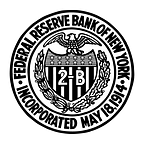How Do Supervisors Contribute to the Conversation on Culture?
Kevin Stiroh, EVP and Head of Supervision
When we hosted our first conference on reforming culture and behavior in the financial services industry in 2014, significant dialogue around misconduct risk, culture, and supervision didn’t exist. Now, as we prepare to host our fourth event on the topic on June 18, supervision is an accepted and critical part of the global conversation on cultural reform in finance.
I believe, as do many colleagues, that supervisors have a responsibility to understand how a firm’s leaders proactively manage all of their significant risks, including the risks presented by misconduct and culture within their firms.
What, specifically, can supervisors do? There are three areas where supervisors can be most impactful:
- Comparative assessment: Supervisors, who observe culture and conduct within and across multiple firms, have ample opportunity to gather comparative data that they can use to inform their firm-specific views. Individual firms also stand to benefit in terms of their own risk assessment and risk appetite framework.
- Sharing leading practices and tools: Supervisors can share with firms the range of culture and conduct practices and tools they observe across the industry, such as dashboards, balanced scorecards, and governance practices.
- Coordination of industry efforts: Supervisors may also be able to facilitate efforts to develop benchmarking and other industry-wide assessments.
As we’ve seen through the misconduct failures of the past decade, firms can have risk management policies, organizational schemes, committee structures, project plans, and other forms of documentation in place. But how those policies are implemented in practice depends on a firm’s culture. The management of risk begins with human behavior and the decisions people make individually and collectively. Supervisors have a responsibility to hold firms accountable for managing all of their risks well.
We have certainly made progress over the past four years, though we still have much to learn. As different supervisory agencies innovate and develop new methods, we gain a better understanding of what works and how we can promote stronger cultures that mitigate misconduct risk.
On June 18, I will be covering these and other related topics with four supervisors whose agencies are pursuing innovative supervisory approaches to culture and misconduct risk:
- Norman Chan, Chief Executive of the Hong Kong Monetary Authority. The HKMA’s recent guidance directs firms to promote a sound corporate culture through a three-pillar framework — governance, incentives, and assessment and feedback — and requires firms to have incentive systems that account for both individual and business unit adherence to culture and conduct standards.
- Jonathan Davidson, Director of Supervision for the UK Financial Conduct Authority. In the UK, supervisors and firms are learning through the experience of the Senior Managers Regime and other efforts to increase accountability in the industry.
- Jeremy Rudin, Superintendent of Financial Institutions, Office of the Superintendent of Financial Institutions, Canada. The Office of the Superintendent has identified the assessment of how risk culture and other behavioral drivers impact risk management at firms as one of its key priorities.
- Willemieke van Gorkum, Head of Division of Horizontal Functions and Integrity Supervision, Dutch Central Bank. The DNB continues to build on its well-established behavior and culture supervision framework, employing a specialized unit with a range of social science backgrounds to assess the behavioral risks associated with group decision-making at the firms it supervises.
They are by no means alone. New approaches are being explored elsewhere, such as at the Central Bank of Ireland, which is undertaking a behavioral and cultural review of its largest lenders, and at the Australian Prudential Regulatory Authority, where supervisory teams now perform risk culture assessments. And, in a new paper, the Financial Stability Board has published a toolkit for firms and supervisors to use in their efforts to mitigate misconduct risk.
I look forward to the discussion on June 18 and to hearing from our panelists about their experiences, tangible successes and lessons learned, and the indicators they draw upon to assess culture and misconduct risks at the firms they supervise.
The views expressed in this post are those of the contributing authors and do not necessarily reflect the position of the New York Fed or the Federal Reserve System. New York Fed content is subject to our Terms of Use.
